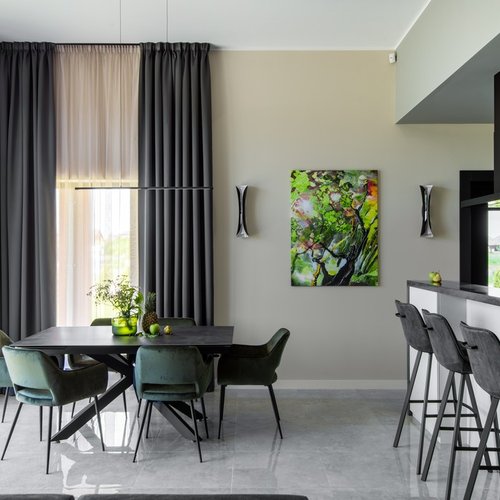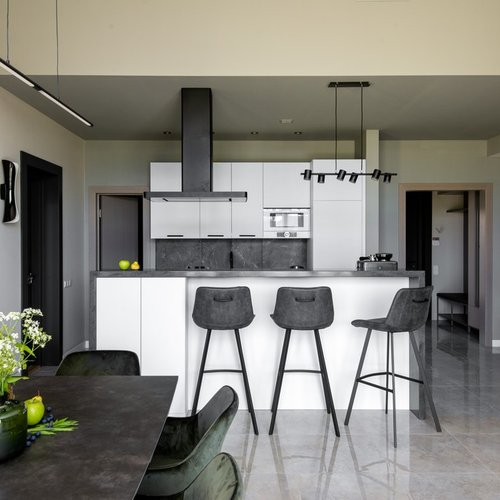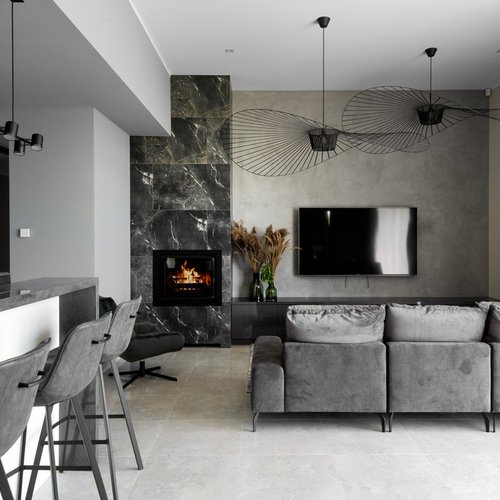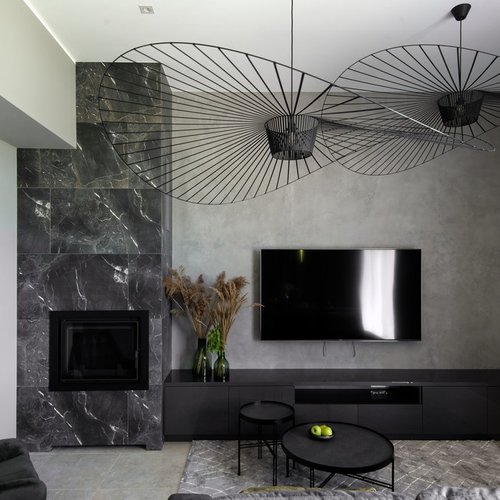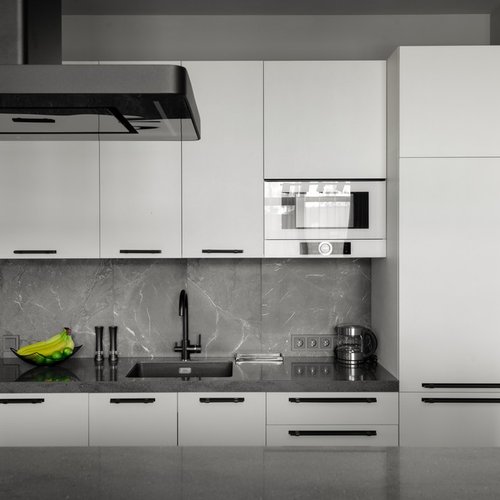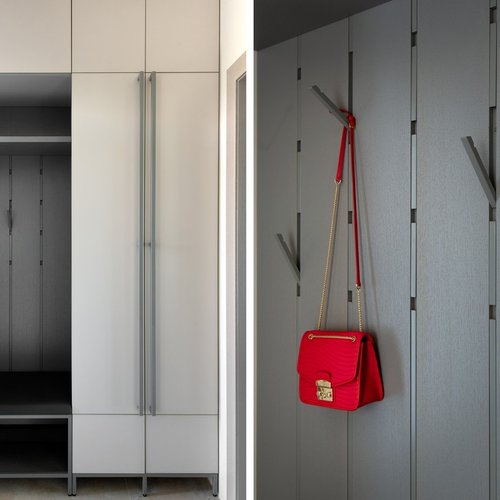Iveta Bigele. Ekskluzīva intervija ArtAlea galerijai
We present to your attention an exclusive interview with the famous designer Iveta Bigele, which she gave to the online gallery of contemporary art ArtAlea.
Iveta Bigele is professionally engaged in interior design of public, commercial and residential premises. Having extensive experience, Iveta agreed to share her thoughts about how to properly design her home and work space, how to fit a work of art into her design, and whether it is necessary to invite a designer for interior design at all, or you can handle all this yourself.
- You are engaged in interior design of public, commercial and residential premises. What projects are more interesting for you to work on? And why?
- At the moment, it is more interesting for me to work on the interior of residential premises, because this is a novelty for me. For most of my career, I have worked with commercial objects, and they most often already have a ready-made concept that I needed to correctly apply in this room. In such objects, I devoted my soul to furniture and its development. Now, due to the pandemic, the implementation of most commercial projects has been suspended, so I changed the direction of my work to the design of residential premises. Private projects are interesting for their diversity in the first place: you can try yourself in different styles. So far, everything has been going well for me and my customers have trusted me: I was creating, and they corrected my fantasies a little. It is also interesting from the point of view of psychology: communication with the customer is an integral part of every project. Often you have to deal not with one person, but with a whole family, where everyone has their own taste, vision and preference. In such situations, I am a buffer between family members, smooth out the corners and try to make the difficult period of change as comfortable as possible for everyone. Well, what is important for me is furniture, a lot of furniture! She is my passion! You can choose a ready-made one, you can design your own, especially for this project, it depends on the desire and financial capabilities of the customer.
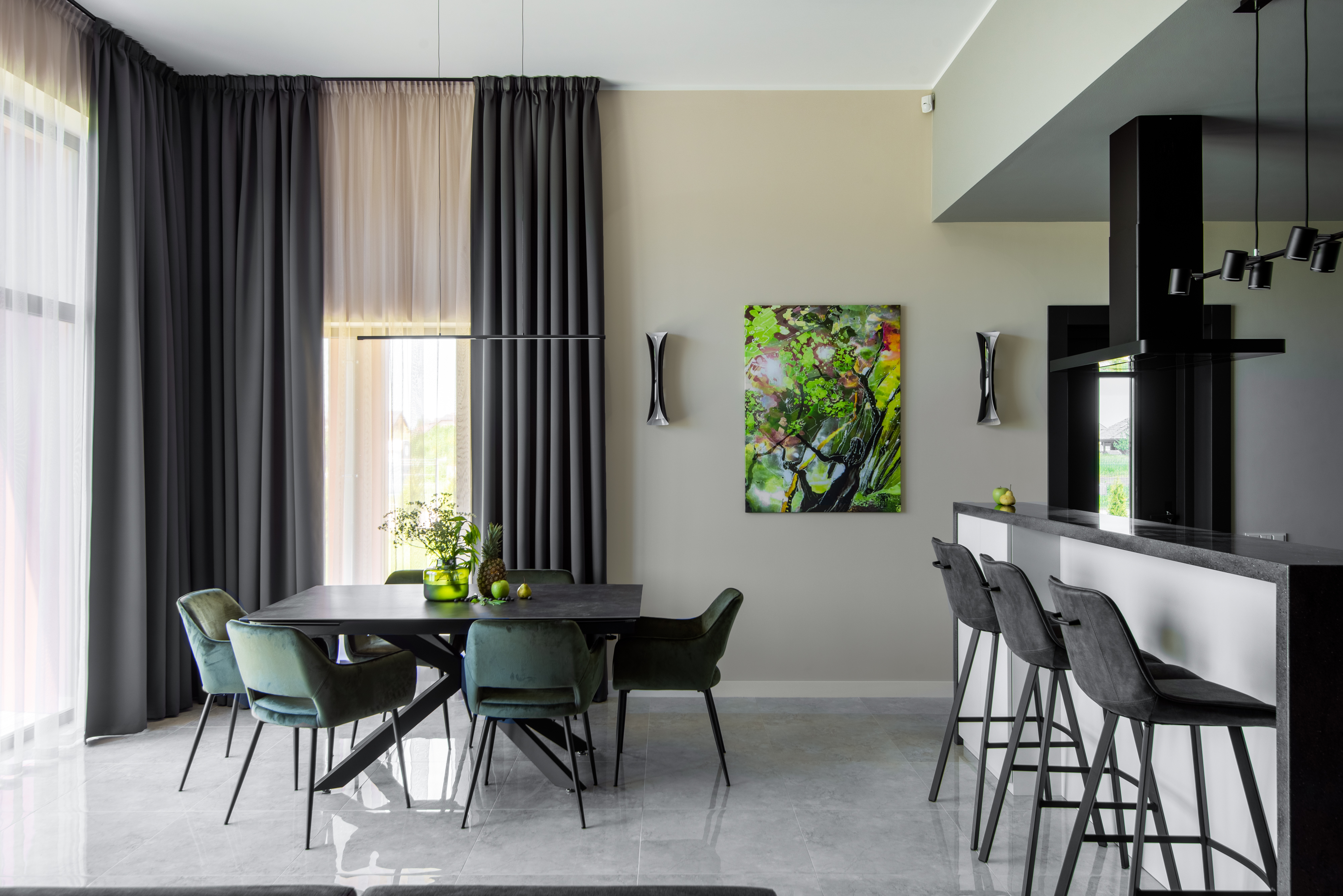
- You call yourself a pragmatic designer. Tell us more about your concept? What is the most important thing for you in interior design?
The interior is not a picture in a glossy magazine, it is the convenience and comfort of its inhabitants
- Yes, I am a pragmatist, or at least I try to be one. After all, the interior is not a picture in a glossy magazine, it is the convenience and comfort of its inhabitants. Undoubtedly, it should be stylish and reflect the character, taste, status and preferences of its owners, but, first of all, it should be thoughtful, ergonomic, functional and practical. Ideally, the interior should be bold, fascinating, intriguing, but all this is just an image, the most important thing is the content! As an example: an armchair can be finished with a first-class fabric with perfect quality of cutting and sewing, but if its filling is made of cheap filler, which is not distinguished by convenience, not longevity, you will very soon be disappointed in buying it and vice versa: there is such a comfortable chair, and the fabric has already worn out, and it's a pity to throw it out and it is sewn again! That's how it is with an ideal interior-it is out of time and fashion, it is so good that you just want to refresh it.
- Please name the most common mistakes that people who design their own house make.
The most common mistake is not to take a designer!
-The most common mistake is not to take a designer! It seems that you can save money on this, but it is not so. And it's not so much the result that matters here, as the process! How many families are divorced during the renovation! This is one of the most conflicted periods in life. Repair is a very energy-consuming process, which often drags on for several months and does not cancel the main work and worries. Planning all communications, endless shopping trips, purchases and calculations of necessary materials, tracking and monitoring their delivery, monitoring the work of builders, and all this does not guarantee that expectations will be met, because there were no drawings or visualization, and not everyone is able to imagine the result before implementation.
In my opinion, you can do without a designer in small, already inhabited apartments with a limited budget. It is important that people should live in this room, then they partly understand how to improve their life in a particular room. But, most likely, they will simply change the furniture and the color of the walls, without bothering with the layout. But it is the skeleton of the interior, and can completely turn the quality of living in it.
If for some reason there is no possibility or desire to hire a designer for all stages of design, I strongly recommend ordering at least the layout and arrangement of communications, this will greatly facilitate the life of both the customer and the builders.
- What would you advise to those who equip a small apartment and want to use the space as efficiently as possible? Are there any secrets here?
- One piece of advice-hire a designer! But seriously, it is important to put the interior not from ready-made, purchased furniture, but to make a built-in, custom-made. Let it be made of laminate, but built-in, because in a small apartment every centimeter counts. The chances that you will find furniture in the size of the niche is negligible, and a gap of 10-15 centimeters is an unused useful area!
It is also advisable to use transformer furniture in a small room, but it is often quite expensive and more relevant in cities where the cost of housing is exorbitant, and a person cannot buy a large apartment, but is quite able to buy expensive furniture. I also recommend not to clutter the room, less details, more benefits.

- What role do works of art play in interior design?
Art objects have always been a sign of a person's culture and wealth
- A work of art is a reflection of the history of the genus, or its current status. From time immemorial, art objects have been a sign of a person's culture and wealth. If a person can afford to decorate the interior not with a reproduction or a fake, but with a real creation of the master, this should be done. Firstly, it is undoubtedly a good investment of funds, and secondly, it can become the highlight of your home. The art objects you have purchased are the personification of your taste and even character.
If we return to the meaning of art in the interior, it complements it, ennobles it and is the inspiration of the designer. Often, the interior concept is completely tied to one picture.
As for the style of the art object and the interior, you definitely do not need to focus on a single style. Modern art fits perfectly into a classic interior, and vice versa, classic works fit into a modern interior. It is important that at least something supports this object in the interior, for example, color, shape or texture.
-How do you choose works of art for interior decoration? Does it happen that specific interior elements are selected for certain paintings?
-Since the customers with whom I had the opportunity to work did not have their own works of art that I needed to fit into the interior, I acted on the principle of selecting paintings for a ready-made interior. I was more guided by the color scheme and the taste of the customer. It happens like this: for example, a house in the neoclassical style, in which you need to fit modern art, to maintain it, I will most likely select some fancy-shaped furniture in the interior as an accent. Or vice versa - in a modern interior, in which you need to fit classical painting, I will most likely choose a carved frame and in the decoration of the room I will most likely add some stucco, but in some modern reading.
-Should the painting be one of the key accents in the interior or should it become a part of it and not distract attention?
The painting should definitely fit into the interior, but only the customer and the designer decide what place it should occupy
-In my opinion, there is no correct answer to this question. It depends on the task, the concept and the specific work of art. The picture should definitely fit into the interior, but what place it should occupy is decided only by the customer and the designer, there are no strict rules in this regard. In general, in modern design, the framework is very blurred in terms of right and wrong. Now it is fashionable to combine the incongruous, the main thing is that the skeleton, i.e. the layout and functionality are in compliance with the rules of ergonomics.
- In which case the picture will obviously be superfluous in the interior?
- Probably, in the case when it has no support in the interior, when it looks like a foreign body.
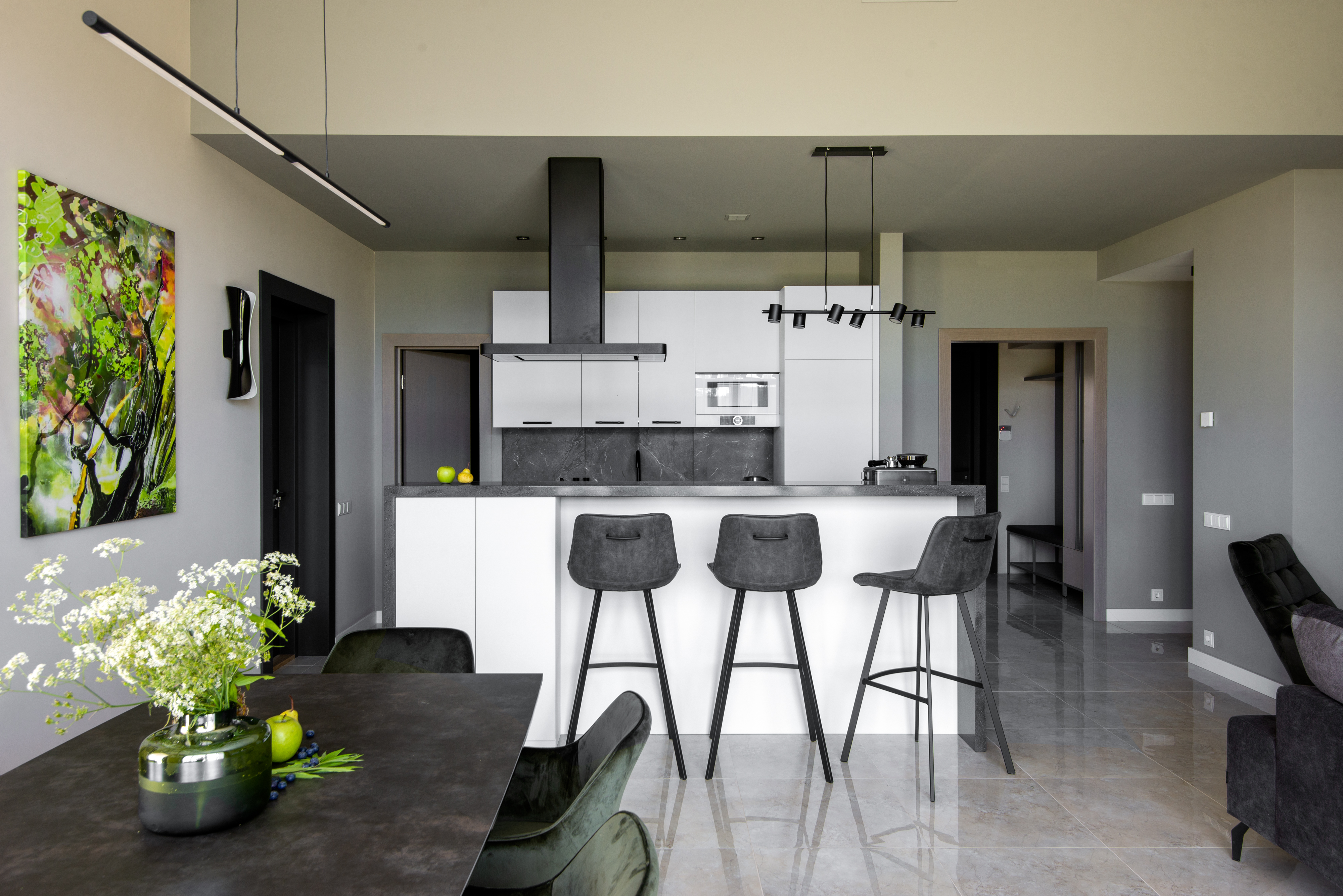
- Are there any specific rules for placing paintings in the room?
- Yes. For example, the height of placement on the wall. The center of the picture should be at the height of eye level or higher, if it is one picture, if it is a composition, then the same rule applies to the composition as a whole. As for other wall objects, they can, of course, be next to the picture, but they must support the composition in one way or another. If you also need to place a clock in a group of paintings, then they definitely should not be below eye level, it is better to be higher, when small paintings from this group can be lower. If there is a desire or need to place decorative lamps on the same wall, they should again be at least eye level and should not somehow distort the color of the picture and highlight its parts.
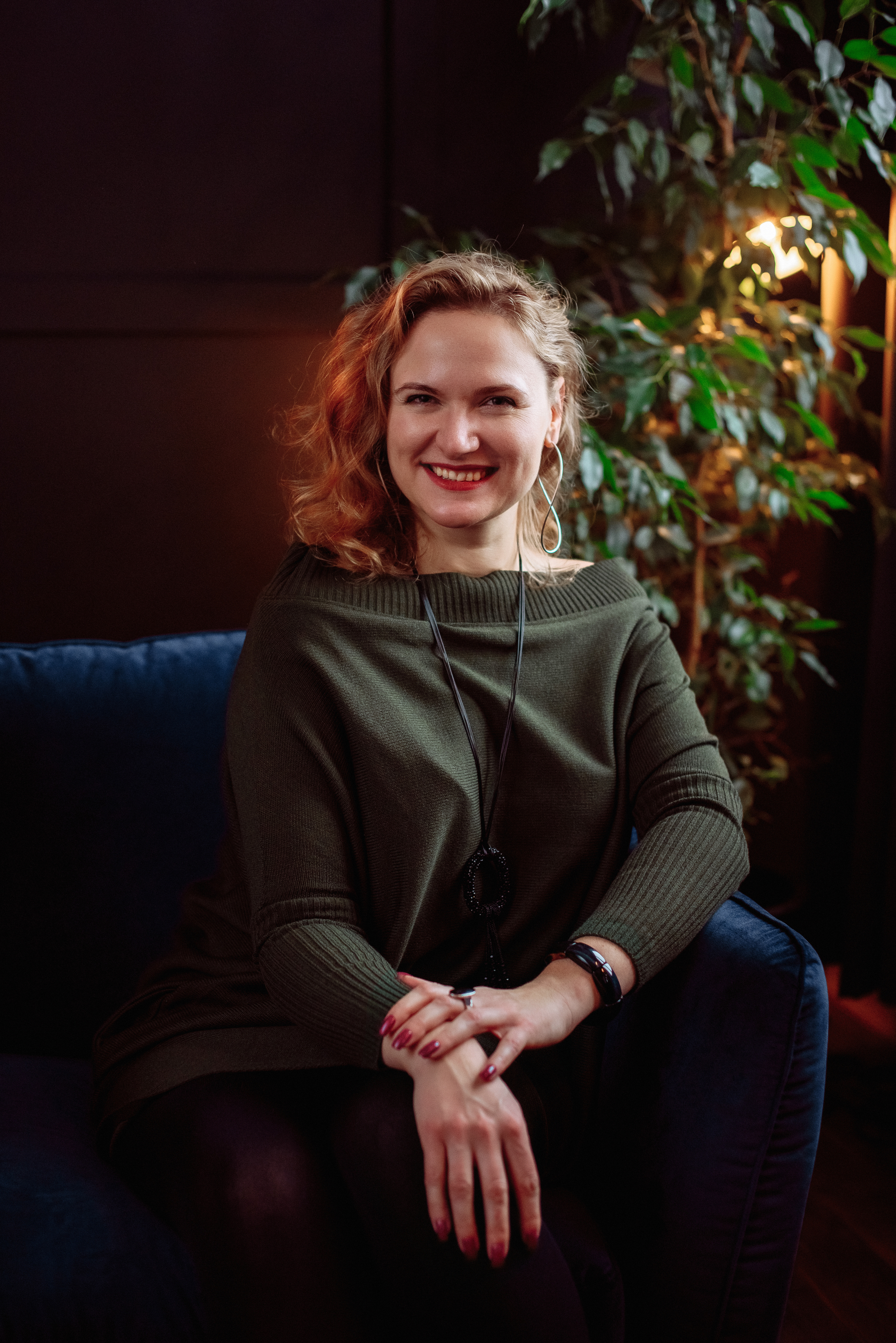
As in any other sphere of human activity, in interior design, professionalism is the fundamental criterion for choosing and inviting a designer. We can assume that we ourselves can easily cope with the task of correctly arranging furniture or hanging paintings. However, with a deeper approach to this issue, it becomes obvious that a professional can open up to us the full breadth of our worldview and design our personal space so that our favorite pieces of furniture and works of art shine with new facets and colors and inspire us to a new perception of ourselves.
